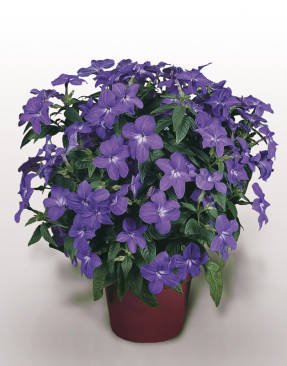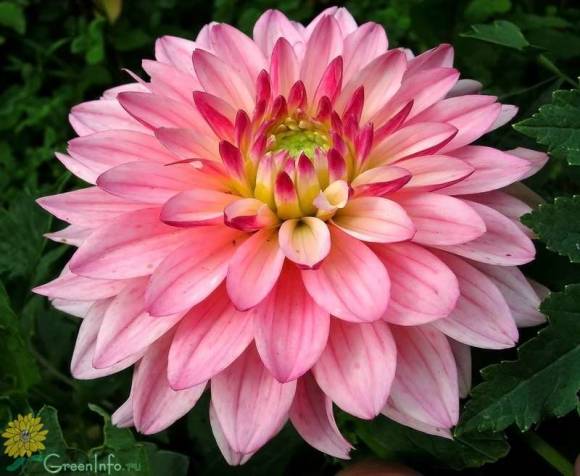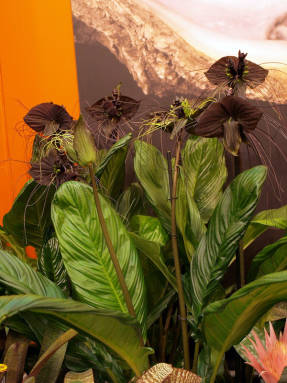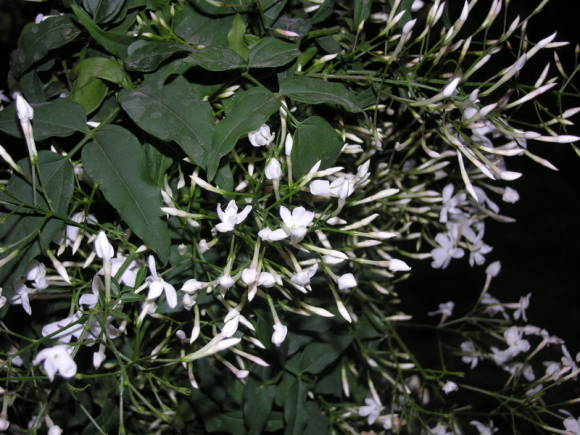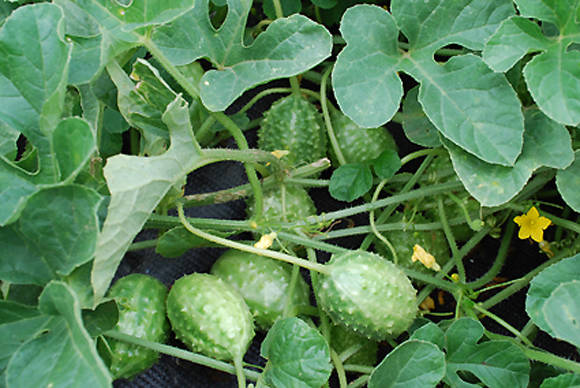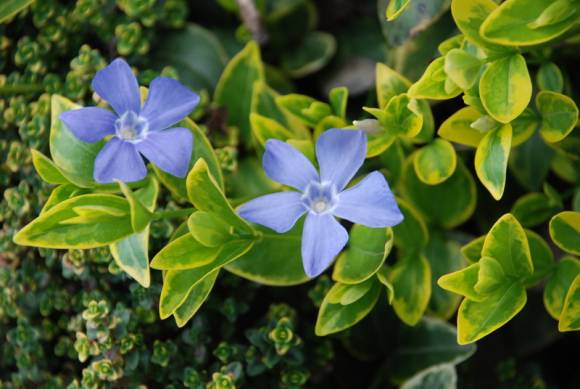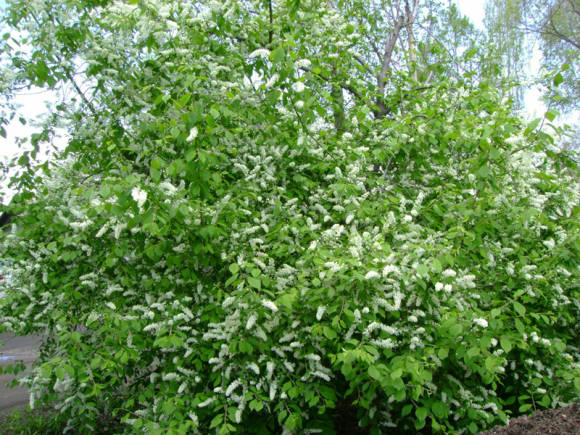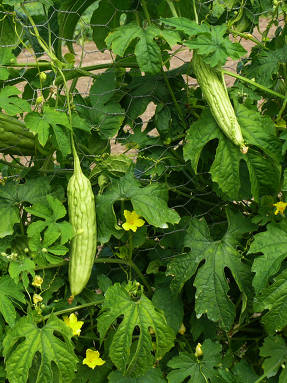
Rod Peony (Paeony) - the only one in the Peony family (Paeoniaceae). It unites about 40 species of plants, one of which is a tree peony, or shrub peony (Paeónia suffruticósa), which differs from other, herbaceous species, primarily in woody shoots that do not die off for the winter. This is one of the most ancient and attractive decorative cultures, the cultivation history of which, according to some experts, goes back about 3000 years. The center of the species diversity of peonies is China, where people first appreciated their medicinal and then decorative qualities before others. Today, the healing properties of peonies continue to be partially used in official and folk medicine, but beauty has long come to the fore. Peonies are valued for their long life, relative ease of care, the variety of shapes and colors of flowers achieved by the efforts of breeders in many countries, and a wonderful aroma, often comparable to the scent of roses.
It is believed that in the entire history of breeding work with peonies, up to 100 thousand varieties could be obtained. Today, the official register includes more than 5,000 registered varieties of herbaceous peonies alone. It is not so easy to navigate the variety of peonies offered for sale, having only a catalog with a short commercial description. The best thing to do is to take a closer look at them during the flowering period in the ground, so in June we visited the Porpax nursery, which is famous for one of the most significant collections of peonies in the country, numbering 800 varieties.
Let's start with the herbaceous peonies, which are most common in gardens. Mostly it is varietiespeony lactobacillus (Paeonia lactiflora). The parent himself has on each stem 3-4 non-double white or pale pink flowers up to 20 cm in diameter, with a delicate lily of the valley aroma. All his descendants inherited the multifloral nature and pleasant aroma, which each variety has its own. In old gardens, there are often French varieties obtained more than 100 years ago, terry and fragrant, many of which were in the bouquets of our grandmothers and remain unsurpassed cut varieties due to the exceptional aroma and delicate pink-white and lilac tones in color (Festival Maxima, Duchess de Nemours, Madame Leone Calot, Monsieur Jules Elie, Sarah Bernhardt, Auguste Desser, Felix Cruz, Anchantress, Graziella, Clemenceau).
In addition to cut-off advantages and long-term growth without dividing, double lactic-flowered peonies also have disadvantages, which, as expected, are a continuation of their advantages. Heavy, double flowers on slender stems can lay down and rot in rainy weather, although unstable stems can be supported with bush holders. In landscape plantings, simple and semi-double varieties with lighter flowers look better. In order for the flower to fully show its varietal qualities, with the end of the vertical growth of the stems, it is necessary to remove the side buds, especially if the peonies are intended for a bouquet. Then the rhizome is not so depleted as a result of flowering.

More modern varieties of American selection, obtained in the second half of the last century, are not so heady aromatic. But they have undoubted advantages over French ones - often a denser texture of the petals and strong stems, which make them more reliable both in the ground and in the cut (Corinne Versant, Mrs. F.D. Roosevelt, A.E. Candred, Paul Wald, Doris Cooper, James Lewis, Ann Cousins, Lemon Chiffon). Some have giant flowers, such as Dinner Plate and Cheddar Cheese.
Now on sale there are many varieties of Chinese selection.Usually they are sold in early spring with bare roots, at a time when peonies, planted according to all the rules in August-September, have already taken root in the soil with suction roots. Such planting material will give a weak plant that will have to be nurtured for several years, and it is better for an inexperienced grower to refrain from buying it, unless the extremely rare color seduces. But container plants take root no worse than the autumn divisions and demonstrate to the full the beauty of the shape and shades of color already in the third year after planting.
Despite the fact that herbaceous peonies bloom for a relatively short time, the beautiful foliage of these plants serves as a good background for flowering plants in compositions. By the way, it is often used for cutting, as an addition to bouquets. Unlike flowers that stay in water for no more than 5 days, foliage stays fresh longer. However, you should not cut many stems from one bush, so as not to weaken the assimilation and replenishment of the rhizome.
Perhaps we would not mention another type of herbaceous peony - medicinal peony. (Paeonia officinalis), if not for his remarkable role in obtaining new varieties of herbaceous peonies. This peony is one of the earliest herbaceous peonies. The most common variety is the dark red Rubra Plena; there is also the white Alba Plena, the deep pink Rosea Plena and the white and pink Alba Mutabilis. The advantages of varieties of medicinal peony with early flowering and come to an end. The flowers quickly disintegrate, the plant forms a few stems, which, under the weight of the flowers, lie on the ground, and is prone to a common disease of peonies - botrytis, or gray rot, to a greater extent than lacto-flowered peonies. Botrytis is called a "warm corpse parasite" - this is a fungal disease that once settled, persists on the roots and plant debris, waiting for wet and cool weather to infect the stems and buds, and eventually destroy the entire plant. Varieties that are not resistant to this disease require constant preventive fungicide treatments.
 |  |
 |  |
Most interspecific hybrids bloom earlier than varietal milky-flowered. Bright peonies are very effective, but their use in cutting is not always possible, since some varieties have an unpleasant odor. Many have no scent, and only a few smell good (Diana Parks, Coral Fey). Some varieties cannot be cut in buds as they do not bloom in water. Use in landscape planting has the same limitations as for all herbaceous peonies.Giving a small number of stems, many bushes look rather ankle and require replanting in the foreground of low perennials, just not too close, so as not to create conditions for the development of Botrytis.
Among American hybrids there is a group "Rock Garden", including low-growing varieties with a hemispherical bush shape and simple red flowers that bloom early (for example, Scarlet Haven, Fairy Princesses, Red Beauty, Airlie Scout). They could be successful for landscaping, but often grow to the usual dimensions for other American hybrids. These varieties, obtained with the participation of fine-leaved peony (Paeonia tenuifolia), with simple red flowers and thin foliage dying off after flowering, by analogy with it, it is sometimes called "Fern-leaved peonies"(Fern Leaf Paeonia) for the graceful lowered dissected foliage, which gives the plant a compact pillow shape.
 |  |
Hybrid "Cactus peonies"(Cactus Dahlia Style) certainly not to those who prefer pomp - a simple flower with narrow petals looks slightly unhealthy. But landscapers may be interested in applying in natural-style gardens. The hybrid variety "Lafayette Squadril" is similar to them, although not related to cactus peonies.
Of all the varietal herbaceous peonies for landscape planting, the most important are peonies with a Japanese flower shape, or simply - japanese peonies, characterized by non-double flowers with 1-2 rows of petals and contrasting color staminodes - modified stamens, in some varieties, quite wide, wavy, corrugated or curled. "Japanese" are both among the lactic-flowered (Ivory Jewel, White Cap) and among the hybrid peonies (Walter Maines, Mackinac Grand, Paula Fay).
 |  |
 |  |
The last word in the selection of peonies is a new group of intersectional Ito hybrids obtained from crossing the herbaceous peony with the tree peony (Gau Jin, Julia Rose, Fest Erival, Lemon Dream, Norwegian Blash, Moning Laylek, Hilary, Pastel Splendor, Kellis Memori). From each of the parents, these peonies took the best - the root system, like a tree peony, herbaceous stems dying off for the winter, densely leafy to the very ground, simple or semi-double, sometimes turning into double, flowers of unusual colors, among which there is the desired yellow (Bartzella, Sequestred Sunshine, Going Bananas). Flowering is long, up to a month, since the flowers do not open at the same time. Many varieties with a pleasant subtle aroma (Bartzella, Kellis Memori, Black Pirate, Isabel Riviere). This group of peonies is not affected by Botrytis and hibernates well.
 |  |
Tree peony, or peony semi-shrub(Paeonia suffruticosa), quite complex in culture in our conditions. The above-ground part of it does not die off for the winter, therefore it requires the same care as roses. Majestic and elegant flowers of various colors, sometimes with a contrasting spot at the base of the petals, a light aroma make you want to have it in the garden. For this sissy, spring planting is completely unacceptable, the purchase of Chinese planting material with bare roots in February - the survival rate will be small. It is better to buy a container plant, which is more expensive but more reliable.Most often, tree peonies are grafted onto a herbaceous peony, which, as indicated above, is susceptible to botrytis. In the first years, especially careful prevention against this disease is needed, otherwise the varietal scion may die along with the stock. If you follow the agrotechnics correctly and when planting, deepen the grafting site by 5 cm, for 2-3 years the plant moves to its own roots and botrytis is no longer affected. He will have only two drawbacks - a slow growth and difficulty in reproduction, and even a slight regret that even on an adult bush it will not be possible to see up to 100 flowers, as at home, in China.
 Hybrid peony Paula Fey Hybrid peony Paula Fey
Hybrid peony Paula Fey Hybrid peony Paula Fey  Peony hybrid Mackinac Grand Peony hybrid Mackinac Grand
Peony hybrid Mackinac Grand Peony hybrid Mackinac Grand  Peony hybrid Ivory Jewel Peony hybrid Ivory Jewel
Peony hybrid Ivory Jewel Peony hybrid Ivory Jewel  Peony hybrid Groving Raspberry Rose Peony hybrid Groving Raspberry Rose
Peony hybrid Groving Raspberry Rose Peony hybrid Groving Raspberry Rose  Hybrid peony Gin Bokstos Hybrid peony Gin Bokstos
Hybrid peony Gin Bokstos Hybrid peony Gin Bokstos  Peony hybrid Command Performance Peony hybrid Command Performance
Peony hybrid Command Performance Peony hybrid Command Performance  Peony hybrid Coral Sunset Peony hybrid Coral Sunset
Peony hybrid Coral Sunset Peony hybrid Coral Sunset  Peony hybrid Red Satin Peony hybrid Red Satin
Peony hybrid Red Satin Peony hybrid Red Satin  Peony hybrid Red Charm Peony hybrid Red Charm
Peony hybrid Red Charm Peony hybrid Red Charm  Peony hybrid Cherry Raffles Peony hybrid Cherry Raffles
Peony hybrid Cherry Raffles Peony hybrid Cherry Raffles  Peony Ito-hybrid Bartzell Peony Ito-hybrid Bartzell
Peony Ito-hybrid Bartzell Peony Ito-hybrid Bartzell  Peony Ito-hybrid Black Pirate Peony Ito-hybrid Black Pirate
Peony Ito-hybrid Black Pirate Peony Ito-hybrid Black Pirate  Peony Ito-hybrid Gaujin Peony Ito-hybrid Gaujin
Peony Ito-hybrid Gaujin Peony Ito-hybrid Gaujin  Peony Ito-hybrid Julia Rose Peony Ito-hybrid Julia Rose
Peony Ito-hybrid Julia Rose Peony Ito-hybrid Julia Rose  Peony Ito-hybrid Kelis Memori Peony Ito-hybrid Kelis Memori
Peony Ito-hybrid Kelis Memori Peony Ito-hybrid Kelis Memori  Peony Ito-hybrid Lemon Dream Peony Ito-hybrid Lemon Dream
Peony Ito-hybrid Lemon Dream Peony Ito-hybrid Lemon Dream  Peony Ito-hybrid Moning Laylek Peony Ito-hybrid Moning Laylek
Peony Ito-hybrid Moning Laylek Peony Ito-hybrid Moning Laylek  Peony Ito-hybrid Norwegian Blush Peony Ito-hybrid Norwegian Blush
Peony Ito-hybrid Norwegian Blush Peony Ito-hybrid Norwegian Blush  Peony Ito-hybrid Pastel Splendor Peony Ito-hybrid Pastel Splendor
Peony Ito-hybrid Pastel Splendor Peony Ito-hybrid Pastel Splendor  Peony Ito-hybrid Sequestred Sunshine Peony Ito-hybrid Sequestred Sunshine
Peony Ito-hybrid Sequestred Sunshine Peony Ito-hybrid Sequestred Sunshine  Peony Ito-hybrid Scarlet Haven Peony Ito-hybrid Scarlet Haven
Peony Ito-hybrid Scarlet Haven Peony Ito-hybrid Scarlet Haven  Peony Ito-hybrid Fest Arival Peony Ito-hybrid Fest Arival
Peony Ito-hybrid Fest Arival Peony Ito-hybrid Fest Arival  Peony Ito-hybrid Hilary Peony Ito-hybrid Hilary
Peony Ito-hybrid Hilary Peony Ito-hybrid Hilary  Peony Ito-hybrid Hilary Peony Ito-hybrid Hilary
Peony Ito-hybrid Hilary Peony Ito-hybrid Hilary
